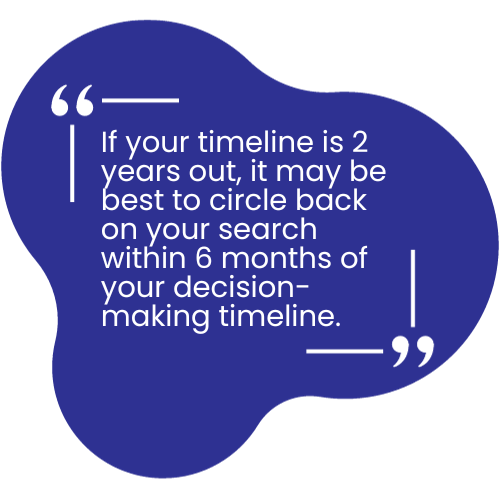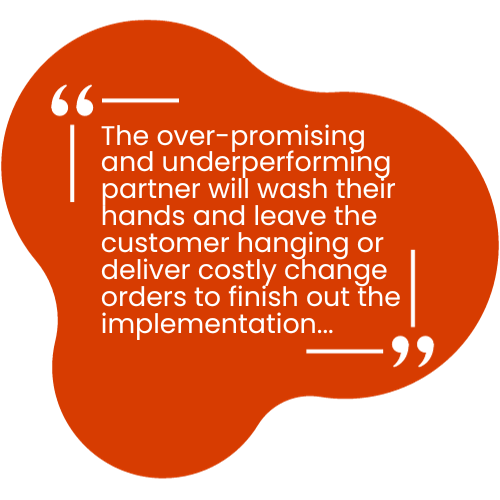Written by Austin Brown
The average organization changes ERP solutions every 8-10 years. Most organizations have 7 or 8 different software solutions they need to operate. There are many things to think about before selecting a new ERP. Below are some key things to think about.
Prepare to Engage
There are several factors that should be considered before beginning a search for a new ERP solution. By being better prepared, it easily allows you and the partner to understand if there is a good fit. Three things your organization should be prepared for are:
- Know your organization. There are several things a partner needs to know before recommending a solution. Some common things a partner is going to need to know about your organization to see if you are a fit for their product(s), such as number of users and employees, revenue, locations, multi-currency/multi-lingual capabilities, compliance needs (DCAA, HIPAA, NIST 800-171/CMMC, etc.), historical data migration, key third party applications (payroll, CRM, AMS, lease management, etc.) and other required capabilities. The partner will need these items for a demonstration of the product. It wastes your and the partner’s time if they demo something you don’t need or miss something you do need. A good partner will have a comprehensive understanding of your industry but recognize every company is unique in their own way.
- Have a timeline and budget. Timeline is essential because most modern cloud ERP solutions have frequent updates or releases, usually 2-4 times a year. If your timeline is 2 years out, it may be best to circle back on your search within 6 months of your decision-making timeline. Too often, lack of timeline creates multiple demos and becomes very time consuming for you and your partner. Also, pricing is likely to change.

- Budgeting should also be factored in. There are software connection companies who will engage you with a partner and give you a budget that usually is considerably lower than what it actually costs. Your best option is to do some research. Some companies, like Microsoft, are very transparent about licensing but the implementation costs can vary based on your needs. Many other software companies do not publish their pricing. Think about what your current pain is costing you in time and money, and how much you are willing and able to spend to fix it to ultimately create a ROI. There are two costs associated with an ERP move- licenses and implementation.
- Bring in key decision makers and players. Often, organizations have a lead resource, such as an accountant or IT leader, who leads in efforts to find the right tools. This is entirely normal, but they may not know the ins and outs of the entire organization. Bringing in the key people should not only mean CEO/CFO to these discovery calls and demonstrations, but also department managers. If your company is heavy in manufacturing and distribution, it will be beneficial to have production and warehouse managers present and engaged in discussions. They are hands on and will be using the system and any gaps in the chosen solution may hinder their operations.

Find the Right Solution
Finding the right solution can be a difficult process. I wish I could give an average decision-making process for ERP selection but there are so many applications available to choose from, the process can take several weeks to months. Some organizations may have leaders who come from a similar organization and have had experience with modern ERPs, while some may have been on legacy products for 20 years and have no clue what will fit them best. Some things to think about are:
- Know what your organization primarily profits from. If you are a not-for-profit, weed out government contracting solutions early. Although great solutions, Unanet and Deltek should not be at the top of your list for an NFP. A good partner may not always be a Value-Added Reseller (VAR) of the product that will best suit you but will easily be able to tell if their solution is not a good fit for you. The last thing you want to do is have an ERP solution that is pretty, but you must add 15 different Independent Third-party Vendors (ISVs) to be able to operate.
- Do your research. There are tons of forums and crowd sourced webpages out there that can help you understand what is best for your industry and customer ratings/reviews of the products. One of my favorites is G2 Crowd (www.g2.com). It is a peer-to-peer review website comparing multiple different software solutions.
- Think about how your global landscape. If you are operating in one country with one currency, many mid-market solutions will work for you. If you are operating in multiple countries and distributing all over the world, you will want to consider enterprise solutions, such as Microsoft Dynamics 365 Finance and Supply Chain or SAP.
- Consider integrations. Most modern solutions have open APIs and can integrate with just about any ISV, or one similar to it. However, some key applications your company relies on may not integrate in the modern atmosphere. A strong partner will be able to find an application that integrates and will have a better user experience and interface.

Find the Right Partner
There are thousands of VARs out there that can implement and support their product. However, many of them fall short on experience, support, and development. Finding the right partner is arguably just as important as finding the right software. You may have found that one solution suits you best but remember there are others who offer the same product and may be a better fit for you. Some things to consider are:
- Where are you located? Some partners operate primarily in a geographical location, mainly because that is where they hire. You want to make sure that your partner is operating in the same times as your business. If something happens at 3 pm on the West Coast, it is unlikely you will get a response from your partner on the East Coast before the end of the business day. Many partners, like us at KTL, have resources available in normal business hours for any US entity.
- Look out for red flags. Lack of experience is red flag #1. If the partner has only been in business for a couple years and has had limited experience, you may find yourself in a headache. This may not always be true; they may come from a load of experience and went out on their own. Don’t be afraid to ask. Also, don’t be afraid to ask for references, which I’ll touch on later in this section.
 Red flag #2 seems like the offer is too good to be true, because it almost always is. Many organizations get quotes from 3 or 4 vendors, which I highly encourage. One of my least favorite client engagements with a customer is what I call “rescue-implementations”. I absolutely love helping the customer get to where they want to be but usually the reason we are even talking is because they chose a partner based purely on price. Some partners promise something similar to a 90-day, fixed fee, implementation, and it goes south. This is costly for you because we, as sometimes a rescue team, may need to do a deep dive into what the other partner configured to even recognize where the problem is. It is not always surface level. The over-promising and underperforming partner will wash their hands and leave the customer hanging or deliver costly change orders to finish out the implementation, which brings me to my next suggestion.
Red flag #2 seems like the offer is too good to be true, because it almost always is. Many organizations get quotes from 3 or 4 vendors, which I highly encourage. One of my least favorite client engagements with a customer is what I call “rescue-implementations”. I absolutely love helping the customer get to where they want to be but usually the reason we are even talking is because they chose a partner based purely on price. Some partners promise something similar to a 90-day, fixed fee, implementation, and it goes south. This is costly for you because we, as sometimes a rescue team, may need to do a deep dive into what the other partner configured to even recognize where the problem is. It is not always surface level. The over-promising and underperforming partner will wash their hands and leave the customer hanging or deliver costly change orders to finish out the implementation, which brings me to my next suggestion. - Ask about their support structure. Is their support based on an hourly rate or can they provide dedicated managed support services moving forward? Most modern ERPs do not require a lot of support assistance so generally an hourly rate is fine. However, some companies have a lot of integrations and new releases and updates across all solutions may require monitoring and maintenance to be sure these changes do not impact performance.
- Ask about experience and references. Experience does not mean only implementing the solution itself. Can the partner create integrations that are not out-of-the-box? Does the partner have experience with integrations tools, such as KingswaySoft or Scribe (TIBCO)? Can the partner effectively find the appropriate ISVs for any gaps, facilitate demos, gather pricing, and effectively support the ISV to gain access to data to implement their tool? These are all things that you need to consider when choosing a partner. You do not want to have a stand-alone ERP implemented and be stuck asking the question: “Now what?”.
Also, it is fair to ask for references for companies who are like your organization. I’ve seen some partners refuse to provide references, but here at KTL, with the permission of the customer, we will absolutely provide references. However, please consider that if you ask for a reference, we (I) will ask if I provide you references, that you would be willing to be one.
While many of these things may seem like a no-brainer, a lot of these items are often missing. To prevent painful selection processes, it is beneficial to be prepared, know what to look for in a solution, and how to find the right partner. If you need help finding the right solution, please contact me at abrown@ktlsolutions.com or 301-329-2795.
We are a Microsoft only partner, but I come from a background of multiple ERP solutions and will not hesitate to let you know if our solutions are not fit for you and will even make suggestions on what fits and the partners to help.






















